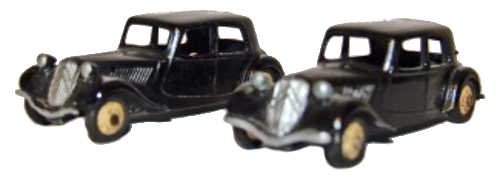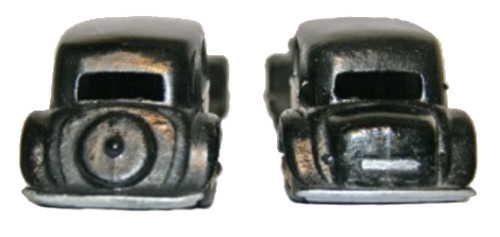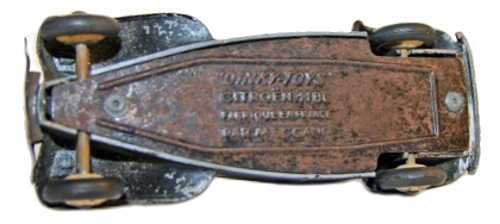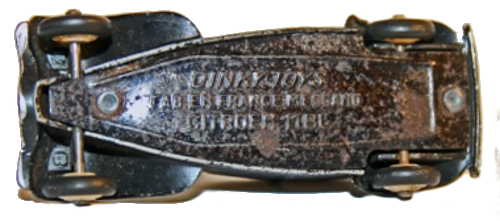24N Citroën Traction Avant 11 BL: from ‘Gangster limousine’ to ‘Maigret’.
by John Morris
The French Dinky, 24N, Citroën Traction Avant 11 BL, first appeared in the 1949 catalogue and was introduced during April of that year. Originally, Citroën unveiled the car at the 1934 Paris Motor Show, when the vehicle became the first monocoque production car with front-wheel drive. With a body sculptured in clay by its designers, Lefébvre and Bertoni, Ferdinand Porsche designed the independent suspension and hydraulic brakes. The Berline Legere (BL) or light saloon refers to a slightly shorter vehicle than the BN version.
The model appeared in two formats, each with three variants. In 1949, 24N/1a, the 96mm long model had a small rear window, the spare wheel shaped casting, metal wheels and a flat base plate. 24N/1b replaced the earliest version in 1950. With standard concave metal wheel hubs, painted a regal golden yellow, tyres, a small rear window and a reinforced sunroof, the model cost 135 Fr. (old), about 2/10. 24N/1b was withdrawn at the end of 1951. Introduced and withdrawn in 1952, 24N/1c was identical to the 1950-1 model with the exception of a much larger rear window, rear-axle pillars and cream wheel hubs. The base plate had a small engraving, but without a model number.
In 1953, French Dinky introduced 24N/2a, the first of the new version with a boot or trunk and spare wheel under cover. The model distinguished itself by its large rear window and a small engraving on the base plate. The variant was withdrawn at the end of 1954 and replaced by in 1955 by 24N/2b, which had a chequered interior to the sunroof and a base plate with a larger engraving. This version included the model number 24N, across the axle, in the engraving. Costing 200Fr. (old), about 4/-, the 24N/2c, French Dinky introduced the last of the Citroën traction models in 1956. The rear window reverted to the smaller type and axle pillars were reinforced. Although some versions of this model retain painted wheel hubs, many had chrome spun hubs. The model came in silver, grey or black and was finally withdrawn in 1957.
The 1,911 cc Citroën Traction Avant was capable of 0-60 in 21.2 seconds, 72mph and averaged 28mpg. By 1939, about 250 of the vehicles were in service with the French army. A further 570 manufactured in 1940 and those produced under German occupation were registered to the Wehrmacht. However, the Citroën Traction was also the popular choice of vehicle for the French Resistance and FFI (Forces Françaises de l'Intérieur). After World War 2, Citroën built the Traction in Paris, but also in Belgium, Denmark and a right-hand drive version, at Slough in the UK.
Throughout mainland Europe, the Traction became a favourite of gangsters, earning itself the nickname of the ‘Gangster limousine’. As a consequence, the Traction Avant also became popular with the National Police forces of several countries, including Poland’s state security service. The BBC capitalised on the vehicle’s success in their high-rated television series, ‘Maigret’, based on the adaptation of novels by George Simonon. The programme, which ran for four series between 1960 and 1963, cast actor Rupert Davies, as a detective from the Sûreté Nationale (now France’s, Police Nationale), who drove to the scene of crimes in his faithful Citroën Traction.






Thanks to John Morris